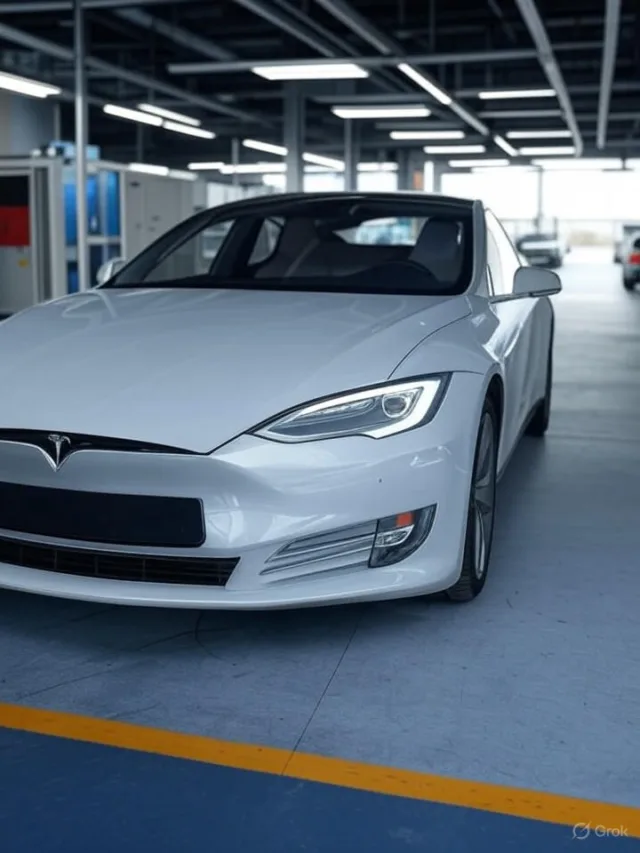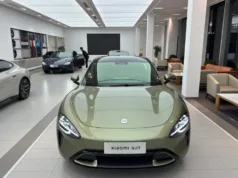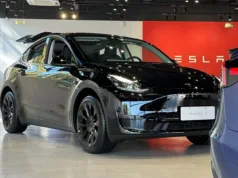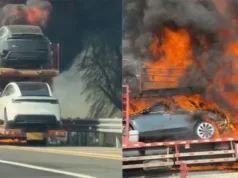
In a bold move to navigate escalating U.S.-China trade tensions, Tesla Inc. is aggressively decoupling its U.S. electric vehicle production from Chinese components. According to recent reports, the company is mandating suppliers to eliminate all China-made parts for vehicles assembled in the U.S., aiming for a complete phase-out by 2027. This strategy is designed to shield Tesla from impending 25% tariffs on Chinese imports, potentially saving the company $2-3 billion annually while reshaping global supply chains.
The push comes amid broader geopolitical uncertainties, including proposed tariffs under the incoming administration. Tesla’s directive, as detailed in a Wall Street Journal report from November 15, 2025, requires suppliers to source alternatives from regions like Mexico and India, accelerating a diversification effort that could increase production costs by 10-15% but boost U.S. jobs by up to 20% in states like Texas and Arizona.
Navigating Tariff Turbulence
Electrek reported on November 17, 2025, that Tesla is instructing suppliers to remove all China-sourced components from parts destined for its U.S. factories in Fremont, California, and Austin, Texas. This includes critical elements like batteries, electronics, and structural parts, which have historically relied on China’s dominant manufacturing ecosystem. The move is not just reactive; it’s a proactive realignment to comply with U.S. trade policies and reduce dependency on a single market.
Reuters highlighted in an April 16, 2025, article that tariffs on Chinese parts for models like the Cybercab and Semi are already disrupting Tesla’s plans. Elon Musk, Tesla’s CEO, has publicly acknowledged the challenges, stating in a March 27, 2025, Fortune interview that the effects of such tariffs are ‘not trivial’ for the company, given that 20-25% of a Tesla’s value originates from Mexican components alone—now a key alternative sourcing hub.
Shifting to Mexico: A Strategic Pivot
WebProNews, in a November 17, 2025, piece, described Tesla’s ‘great decoupling’ as mandating the elimination of China-made components to dodge tariffs, with an accelerated shift to Mexico by 2027. This diversification is expected to reshape the auto industry’s supply chain, potentially increasing U.S. jobs by 20% through expanded operations in Texas and Arizona. However, it may raise vehicle costs by 10-15%, a trade-off Tesla deems necessary amid trade tensions.
Posts on X (formerly Twitter) reflect industry sentiment, with users noting Tesla’s pivot to Mexico and Southeast Asia as tariffs and chip disputes intensify. One post from November 18, 2025, emphasized Tesla’s quiet efforts to build U.S. cars with zero China-made parts, accelerating supply chain shifts. This aligns with broader trends, as seen in a March 5, 2025, Electrek article revealing that over 20% of Tesla’s parts come from Mexico, making it vulnerable yet adaptable to tariff changes.
India Emerges as a Chip Sourcing Powerhouse
A Logistics Insider report from April 21, 2025, detailed Tesla’s exploration of India’s semiconductor sector to diversify away from China amid rising tariffs. The EV giant has initiated discussions with Indian players, aiming to reduce dependence on Chinese chips. This move is part of a larger strategy, as noted in Times of India on March 31, 2025, where Trump’s 25% tariffs on imported vehicles are seen as aiding Tesla domestically but challenging it abroad against rivals like BYD.
CBT News, in a report two days ago (as of November 19, 2025), confirmed Tesla’s acceleration of shifts away from China-made components, with suppliers racing to comply. Interesting Engineering added on November 15, 2025, that Tesla plans to complete the switch to non-China parts within the next year or two, involving replacements for China-sourced components in U.S. vehicles.
Job Boosts and Economic Ripples in the U.S.
The phase-out could significantly impact employment, particularly in Tesla’s U.S. hubs. WebProNews estimates a 20% job boost in Texas and Arizona, where factories in Austin and potential expansions could absorb new manufacturing demands. This aligns with AP News from January 9, 2025, which discussed uncertainty over electric vehicle policies but projected rising EV demand despite tariff clouds.
X posts underscore this optimism, with discussions around decoupling from China and sourcing from Mexico, Vietnam, and India. A post from August 19, 2024, presciently noted the global shift, while a January 18, 2025, post warned of Chinese products becoming costlier by 2027 due to U.S. policy changes, setting the stage for competitive manufacturing resurgence.
Cost Implications and Supply Chain Challenges
While savings from tariff avoidance are projected at $2-3 billion, the transition isn’t without hurdles. TechStartups.com, in a November 18, 2025, article, reported Tesla’s mandate for China-free supply chains for U.S. vehicles, echoing WSJ’s details on the 2027 deadline and associated cost increases. Suppliers must now navigate higher expenses in alternative regions, potentially passing them to consumers.
Reuters on September 12, 2025, noted that BYD and Tesla stand to lose most from Mexico’s proposed 50% tariffs on Chinese autos, indirectly benefiting Tesla’s U.S.-focused strategy. An X post from November 15, 2025, praised Tesla’s pivot as a ‘masterstroke’ for stability, with suppliers moving to Mexico and Nevada by 2026 to support EV momentum.
Geopolitical Context and Future Outlook
The decoupling reflects broader U.S. efforts to bifurcate global economies, as an X post from November 15, 2025, described it as an ‘unfortunate but inevitable’ result of tensions. Tesery.com, four days ago, outlined Tesla’s steps to phase out China-made parts amid trade concerns, bolstering American manufacturing.
Industry insiders see this as a template for other automakers. A November 14, 2025, X post mentioned GM’s similar 2027 deadline for suppliers to avoid China, favoring India, Mexico, and Canada despite tariffs. As Tesla leads, the EV sector’s supply chain evolution could define the next decade of automotive innovation.









